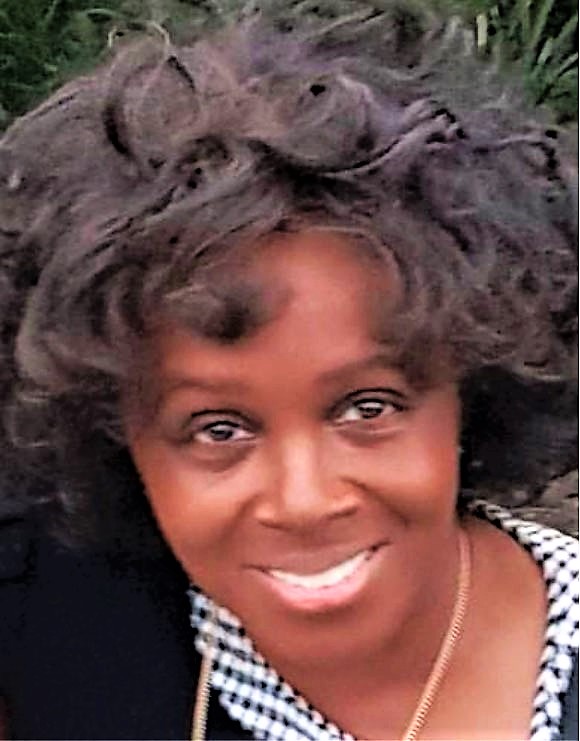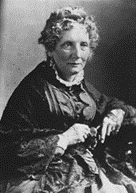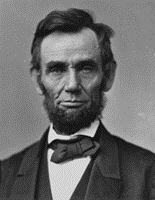By Maureen Grey

Founded in 1877 in the county of Queens, Long Island by Cornelia Stewart in memory of her department store and railroad capitalist husband Alexander Turner Stewart, The Cathedral School of St. Mary educated young girls in Garden City, NY until 1991. This independent school is where I learned how to lead teams and clubs, play sports, stretch my skills while progressing in Math and Science. I did not want to attend this girls college preparatory school, but when I think now of all the girls in the 1800’s – regardless of race who were not given or allowed to have an independent education that allowed one to gain information, analyze and think outside the box, I become disappointed in how ungrateful I have become. Such a school Harriet Beecher Stowe and her sisters would relish to attend and run. The independence an education affords one, lasts a lifetime.
When I think of my black and white saddle shoes stepping in the same spot on the wooden steps worn out by 100 years of girls leading to the chapel in the Old Building – where for 50 years those girls could not vote, I remember how I felt then that I had an obligation to do better – to serve just like those girls before me who wore out the steps climbing to their futures. That notion of academic excellence and serving others is steeped in independent schools and those who are independent learners. My education was not so different from many who attended or formed female seminaries like Harriet Beecher Stowe. Charged with helping others, Harriet Beecher Stowe affected the Republican presidency of an unlikely office holder – Abraham Lincoln. Contemporaries, Abraham Lincoln and Harriet Beecher Stowe were examples of those who were not considered capable of education – one being poor and the other being female.
Harriet Beecher Stowe: A Republican Woman?

Harriet Beecher Stowe, the author of Uncle Tom’s Cabin, impacted the presidency. One cannot say definitively that she was a member of the new Republican Party which was formed in 1854. Women were not allowed to vote during Stowe’s lifetime, but she petitioned Abraham Lincoln for an audience despite her disenfranchisement-and she got it.
In 1854, the Republican Party was formed mainly in opposition to the Kansas Nebraska Act that required residents to vote whether the territories acquired as a result of the Mexican-American War (1846-48) would be free or slave. John C. Fremont lost the election of 1856, but the outcome was different in 1860. Lincoln was the second Republican to run for the presidency and the first to win. Harriet Stowe had a vested interest in one of his platforms – slavery. Stowe, a wife, author, mother, abolitionist, and descendent of a famous social activist religious family, became so upset when Lincoln fired Fremont, the first presidential Republican candidate when Fremont freed the slaves in territories captured by the Union. Perhaps she thought, “How could a Republican disrespect the first Republican presidential candidate whose platform was to end slavery?”
Why did Harriet Beecher Stowe Visit Lincoln

Harriet Beecher Stowe wanted to visit Abraham Lincoln to tell him to get on with it – free the slaves immediately. Stowe had been very critical of Lincoln because he stated that he neither had intention of saving or destroying slavery because his main obligation was to “…save the union…” (www.mr.lincolnswhitehouse.org). Besides that, Lincoln had dismissed John Fremont from his post and overruled his decision to free the slaves in territories captured by the Union. By September, 1861, Stowe was calling for immediate emancipation of the slaves. This was five months after the firing of cannons on Union ships at Sumter, South Carolina – an action which started the Civil War. Stowe believed that Lincoln was acting too slowly in the emancipation of slaves and she was determined to go quickly to “…Washington to offer him advice.” (www.mr.lincolnswhitehouse.org)
Another reason for her visit may be that she had become a vocal abolitionist once the Fugitive Slave Act had been passed in 1850. The Act obliged every citizen to return runaway slaves to their masters or face punishment. She had seen how whites in the 1830’s through 1840’s, especially the Irish, fought and killed freed black men in Ohio because the freedmen possessed an economic threat to all whites at the lower economic end.
What Qualifications Did Stowe Have to Visit the President?
This was a bold move on the part of a woman during the nineteenth century, but she was a known author-respected by most in the North for exposing the life of slaves and reviled by many in the South for her negative portrayal of slavery in her best selling book, Uncle Tom’s Cabin. The South saw her book as propaganda. She also was an anti-slavery activist since her days living in Ohio where she saw a slave auction. Her father, Rev. Lyman Beecher moved his large family from Connecticut to Ohio Lane Theology Seminary of which he presided in the 1830’s. Rev. Lyman Beecher was a Second Great Awakening Presbyterian evangelist who believed in the social activism and the rigorous education of his children-especially his girls.
At Lane Seminary, Stowe was able to attend debates on abolition and see firsthand the institution of slavery in action. The education she received in Connecticut at various seminaries allowed her to help her sister, East Hampton, New York born Catharine Beecher, run the Hartford Female Seminary before moving to Ohio. Once in Ohio, Stowe helped Catharine to open another school. The schools that these sisters attended or opened were not the usual dame schools for girls which taught etiquette, embroidery, music, but rather these Beecher girls learned the same subjects as the boys-math, natural sciences, rhetoric, and literature. Catharine was also noted for introducing physical education for the girls-a radical move during that time which believed that females were too frail for exercise.
Like Catharine, Harriet was a writer and lecturer. Stowe entered her compositions for publication while she was in seminary. After she married her husband in 1836, the Rev. Calvin E. Stowe, whom she met at the literary club at Lane Seminary, Stowe moved to Brunswick, Maine where her husband was teaching at Bowdoin. Her responsibilities as a mother of seven reduced her time for writing. While at Bowdoin, the Stowes were active participants in the Underground Railroad-hiding slaves in their homes. It was during a church service in Brunswick that she had a vision of a dying slave (https://en.wikipedia.org/ wiki/Harriet_Beecher_Stowe). This vision and the death of her young child would eventually be the basis and motivation for writing Uncle Tom’s Cabin.
Why Would Lincoln Agree to Meet with Harriet Beecher Stowe?
Harriet Beecher Stowe was a well-educated woman. She had the equivalent of a college education; and by estimations Abraham Lincoln had a year’s worth of sporadic formal education by the time he was 12. Abraham Lincoln was born in 1809 to parents who had very little formal education. Lincoln’s family moved often and some places had no public schools. Any education that Lincoln and his siblings received were at subscription schools where their parents would have to pay the tuition. Lincoln was described by his stepmother, Sarah, as always reading something. As an adult Lincoln improved himself by studying English grammar and the works of Greek mathematician, Euclid. (Abraham Lincoln’s Education & Formal Schooling)
Lincoln had to work hard to educate himself in his late teens until he left home at 22. Lincoln was an avid reader-reading when he should have done his chores which caused Thomas Lincoln to regret paying for the schooling. His reading eventually became a problem for his father, Thomas Lincoln, who would hide or throw out the books. Thomas Lincoln believed that education would not help his son. According to TotallyHistory.com, Lincoln’s father “….was reported to have mockingly said that his son may still be deluding himself with education….He added that if his son would stop wasting his time on books, he might achieve something important.” (https://totallyhistory.com/abraham-lincolns-education/)
Despite his father’s attitude towards education, Lincoln’s appetite for education led him to become a lawyer-as was the custom back then at the knee of a practicing lawyer. Even though it took him longer than the usual 3 years to study and pass the bar, Lincoln became a lawyer which laid the groundwork for his political career which culminated in being elected to the Illinois state representative, Congress, and the presidency.
Given his love for independent education, it was an honor for Abraham Lincoln to welcome an educated woman and published writer. Lincoln’s Christian foundation propelled him to respect such a request of the daughter of one of the leaders of the Second Great Awakening as his country faced a political and economic Awakening.
The White House Visit
Although it was reported that he “received her gravely; after all he had been harassed by many evangels,” (www.mr.lincolnswhitehouse.org), the visit started slowly, but ended with a great deal of humor. The visit started with an introduction to a room where the fire was burning. Mr. Seward introduced Mrs. Stowe to President Lincoln. He arose from his chair and is renowned for saying “So you’re the little woman who wrote the book that made this great war.” After being seated, Stowe then asked Lincoln about his views on emancipation. As noted in their letters and diaries, Stowe and her children serving as escorts recounted what a humorous time they had at the White House. Stowe however got a new perspective about Lincoln. She learned that he had strength, but of a different kind-seldom seen in higher leadership. “Harriet Beecher Stowe herself wrote: “Lincoln was a strong man, but his strength was of a peculiar kind; it was not aggressive …it was like the strength not so much of a stone buttress as of a wire cable.” ( (www.mr.lincolnswhitehouse.org).
After the Visit
After the audience, Stowe became “…a Lincoln admirer…” (Notable Visitors: Harriet Beecher Stowe (1811-1896) – Mr. Lincoln’s White House). But based on her writings following Abraham Lincoln’s death, Stowe wrote of a man who wrestled with his ideals and what was best for the industrializing country. Stowe states in her memoir that Lincoln “‘Probably no ruler ever made a more profoundly and peculiarly Christian impression on the mind of the world than Lincoln. In his religious faith two leading ideas were prominent from the first to last-man’s helplessness, both as to strength and wisdom, and God’s helpfulness in both.’” (Notable Visitors: Harriet Beecher Stowe (1811-1896) – Mr. Lincoln’s White House)
It seems that both were changed by the visit. Just over a month later, Lincoln permitted his executive order called the Emancipation Proclamation to go into effect on January 1, 1863-even with the absence of complete emancipation in the Union occupied states like Maryland which were permitted to continue practicing slavery. Mrs. Harriet Beecher Stowe observed that the person she thought was weak, in person Lincoln was tenaciously and inflexibly tied to carry the mission to its termination by compromising here and there until slavery was ended. The ending of slavery was the moral action that was needed to save the United States of America; and it was the guidance of Lincoln upon which many depended to re-unite the country.
April 15, 1865-The Aftermath
Because of his assassination shortly after the surrender of the confederacy in 1865, the path that Lincoln had envisioned for the country – forgiveness, enfranchisement, and unity, did not manifest in the nineteenth century. In the years following the Civil War, Stowe continued to write books, plays, and edit magazines. She also became a suffragette. Stowe died July 1, 1896. Like Lincoln, Stowe died before the completion of her desire – voting in an election. The dreams of Lincoln and Stowe would materialize in the 20th century to a great extent and helped to lay the foundation for a better United States for men and women of all races and economic status.
Without the education they received or brought about through grit and grace, Abraham Lincoln and Harriet Beecher Stowe may not have done as much with their lives. They served others and fought for freedom and civil rights-Harriet Beecher Stowe using her pen; and Abraham Lincoln using his oration, humor, and presidential authority. Their education took them far…all the way to the White House.
Maureen Grey is a lifelong teacher, neighborhood historian and preservationist, who led the fight to landmark St. Joseph’s Episcopal Church and other historic buildings.
Photo Credits
Abraham Lincoln
Harriet Beecher Stowe’s Photo
https://upload.wikimedia.org/wikipedia/commons/thumb/7/7b/Beecher-Stowe.jpg/330px-Beecher-Stowe.jpg

